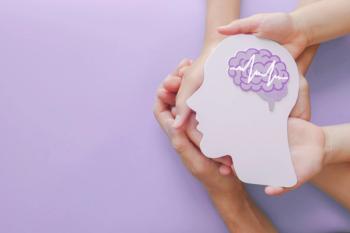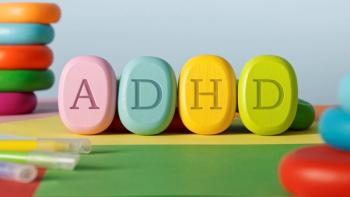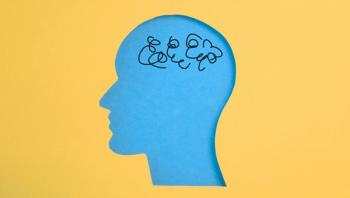
ADHD Considerations for Clinical Practice
ADHD is still surrounded by questions. What do we know?
TALES FROM THE CLINIC
In this installment of Tales From the Clinic: The Art of Psychiatry, we visit a bread-and-butter case of attention-deficit/hyperactivity disorder (ADHD) from a child psychiatry clinic. While very common, this disorder is still surrounded by multiple questions that research is just beginning to unravel. It is subject to gender-norming and differential referral and diagnosis rates in girls versus boys, and, while highly heritable, is still stigmatized and labeled as “bad behavior” in many families. Resistance to initiating psychotropic ADHD medications is prevalent despite extensive proof that treatment can successfully alter a child’s life trajectory in terms of academic achievements, interpersonal relationships, substance use, and criminal history.
Case Study
“Sophie” was an 8-year-old girl with no known past psychiatric history who presented to the clinic for initial psychiatric evaluation accompanied by her mother due to concerns regarding her academic performance and behavior at school. Her mother related that Sophie has always been an “active” child, but there were no concerns until she entered preschool. Since then, teachers have expressed growing concern regarding Sophie’s behavior in the classroom. Teachers had previously recommended seeking psychiatric evaluation for possible
On exam, Sophie was a well-nourished child who appears same as stated age and without evidence of developmental delays. She discussed having trouble making friends at school because kids think she is “weird.” She explained that she gets easily distracted and finds it difficult to stay in her seat during class, and that teachers have often redirected her because she talks out of turn or loudly. She went on to discuss that she feels nervous at school sometimes because she worries about making mistakes and being ridiculed by classmates. She denied having other
Collateral information was obtained by speaking to teachers and reviewing ADHD rating scales. History obtained from the parents, the child, and the child’s teachers was indicative of ADHD combined type. Although teachers also reported that the patient was not performing at grade level, they stated that she did very well when given one-to-one instruction and additional time to complete tasks.
After discussing treatment options with patient’s mother, she gave consent to begin trial with methylphenidate HCL ER. The patient tolerated 18 mg dose but remained symptomatic. The dose was gradually increased to 36 mg QAM, which controlled ADHD symptoms adequately in the morning, but the patient still needed redirection for off-task behavior in the afternoon. Methylphenidate immediate-release 5 mg was added at noon, and teachers reported resolution of ADHD symptoms in the afternoon. The patient’s academic performance improved, and she was now passing subjects with As and Bs. However, her mother was concerned that Sophie had suppressed appetite during the day. Her mother was advised to give medication only on school days, and to provide calorically dense meals and snacks to prevent weight loss. The patient’s weight remained stable and within normal range, so her mother decided to continue the medication regimen.
Discussion
ADHD is a “persistent pattern of inattention and/or hyperactivity-impulsivity that interferes with functioning or development.”1 It is subclassified into 3 types: combined presentation, predominantly inattentive presentation, and predominantly hyperactive presentation.
Although the exact cause of ADHD has yet to be identified, it has been associated with multiple neurophysiological deficits. Theoretical approaches integrate clinical symptoms and neuropsychological difficulties within a framework of certain brain dysfunctions. Cognitive deficits may surface from dysfunctions particularly in fronto-striatal or meso-cortical brain networks, while problems with reward processing may be linked with dysfunctions in the mesolimbic dopaminergic system.7 Notwithstanding, deficits in ADHD may already be seen in the resting brain, and a more fundamental neuronal network approach suggests that in ADHD, particularly default-mode-network (DMN) activity may interfere with activity in neuronal networks engaged in task processing, resulting in difficulties in state regulation and periodic attentional lapses.7 Heritability of different aspects of cognitive and executive dysfunction varies from 10% to 88% in twin studies.8
ADHD is a clinical diagnosis, meaning there are no standard laboratory or imaging studies in ADHD.9 Evaluation for ADHD should consist of clinical interviews with the parent and patient, obtaining information about the patient’s school or day care functioning; evaluation for comorbid psychiatric disorders; and review of the patient’s medical, social, and family histories. The most common comorbidities include oppositional defiant disorder (ODD), conduct disorder, anxiety, depressive disorders, and learning or language disorders. It has been found that individuals with ADHD have a higher incidence of academic problems,
Fortunately, treatment for ADHD is tremendously effective. Stimulant treatment of ADHD is one of the best studied interventions in child psychiatry, and the response rate can be as high as 90%. Stimulants are classified in 2 categories: amphetamines and methylphenidates (
Time needed to reach a therapeutic dose of medication can be affected by multiple factors such as
However, for severe cases or in those with significant comorbidities (ie, ODD, mood or anxiety disorders,
It is not uncommon for children to experience adverse effects to psychotropic medications. With
Behavioral interventions for ADHD include evidence-based parenting interventions such as parent-child interaction therapy (PCIT) and Incredible Years. The core features of these are positive interventions that differentially reinforce desired behaviors and improve the quality of the parent-child attachment relationship. These interventions are indicated as first-line treatment for toddlers and preschool children. They are also indicated for older children with comorbid ODD or other behavioral or parenting concerns that are not core ADHD symptoms. In addition, school interventions such as the 504 Plan and individualized education program (IEP) are often utilized. The 504 Plan provides accommodation and support to allow students to make use of the general education setting. For those students identified as requiring special education, an IEP is drafted. An IEP outlines the special education instruction, supports, and services a student needs to succeed in school. Diagnosis and persistence of ADHD into adulthood is a different topic altogether, and much frenzied research is going on in that field.
Concluding Thoughts
ADHD is one of the most common neurodevelopmental disorders of childhood. It is highly heritable and more diagnosed in males. However, the exact cause for it is not known. The diagnosis of ADHD is a clinical one; therefore, it is necessary to obtain a thorough history from parents, patients, and teachers. ADHD is subclassified as combined type, predominately hyperactive type, and predominately inattentive type. Treatment is the same regardless of subtype, and stimulant medications are usually the most effective form of treatment. For patients with comorbidities, psychotherapy (individual therapy, group therapy, parent management training) will likely be necessary to achieve adequate behavioral control.
As mental health providers, it is imperative that we educate families about the importance of treating ADHD and serve as advocates for our patients to ensure that they receive an adequate education and have access to the necessary resources to reduce the incidence of comorbid psychiatric illness, substance use disorders, relational or legal problems, and employment and financial instability.
Dr Nazario is an assistant professor of psychiatry and behavioral sciences at Baylor College of Medicine in Houston, TX.
References
1. Diagnostic and Statistical Manual of Mental Disorders, 5th ed. American Psychiatric Association; 2013.
2. Drechsler R, Brem S, Brandeis D, et al. ADHD: current concepts and treatments in children and adolescents. Neuropediatrics. 2020;51(5):315-335.
3. Grimm O, Kranz TM, Reif A.
4. Mowlem F, Agnew-Blais J, Taylor E, Asherson P.
5. Slobodin O, Davidovitch M.
6. Slobodin O, Davidovitch M.
7. Albrecht B, Uebel-von Sandersleben H, Gevensleben H, Rothenberger A.
8. Arnett AB, McGrath LM, Flaherty BP, et al.
9. Wolraich ML, Hagan JF Jr, Allan C, et al; Subcommittee on Children and Adolescents With Attention-Deficit/Hyperactive Disorder.
10. Shaw M, Hodgkins P, Caci H, et al.
11. Stahl SM. Stahl’s Essential Psychopharmacology: Neuroscientific Basis and Practical Applications 5th Edition. Cambridge University Press; 2021.
Newsletter
Receive trusted psychiatric news, expert analysis, and clinical insights — subscribe today to support your practice and your patients.













